
Majestic-12 Ltd, the company behind Majestic.com, was registered on October 25th, 2004. We don’t tend to shout about this, as traditionally we’ve celebrated the anniversaries of the launch of MajesticSEO. However, as twenty years is a long time, we didn’t want to let this milestone pass undocumented.
In many offices, birthdays are celebrated with team donuts or cake. Unfortunately this means of celebration doesn’t scale for SaaS businesses. While the internet has revolutionised communications, making sharing content trivial, unfortunately, technical protocols have not as yet been developed to share cake!
To mark this significant anniversary, we’ve taken a look at some of the events, organisations and people who have impacted the world of SEO, and backlinks over the past twenty years.
Our story starts in October, 2004 with the registration of Majestic-12 Ltd.
Backlinks and SEO – the early years.
October 25th, 2004: Majestic-12 Ltd is established – the research years. Initially a “back bedroom” project, this period saw Alex, the CEO and founder of Majestic experiment with data compression and distributed systems to produce the building blocks for Majestic SEO. Majestic was an early innovator in crowd-sourcing, releasing a community-run web crawler to gather data. The story of these early years are catalogued on the Majestic-12 community site.
January 15th 2005: Dave Winer reports of an announcement that Google have introduced “nofollow” link attribute to target comment spam. Writing on scripting.com, Dave suggests one of the great aspects of this release is that it marks a “coming together” of companies to solve a problem. Google would go on to introduce Sponsored and UGC tags in September 2019. For those interested, Barry Schwartz covered the evolution of nofollow from a spam countermeasure to a hint on Search Engine Land.
June 29th, 2005: No mention of SEO during the early 2000’s would be complete without a mention of Bill Slawski. This date marks the first post listed on his blog, SEOByTheSea. SEO by the Sea was to establish it’s self as an essential destination for SEOs aiming to master their craft. Bill became the leading authority of Search Engine Patents and White Papers and their impact on SEO, joining Go Fish Digital as Director of SEO research in 2013. Bill Slawski passed away on May 19th, 2022. Friend, and colleague Miranda Miller described him as a man who “influenced and shaped an entire industry”. Few would argue.
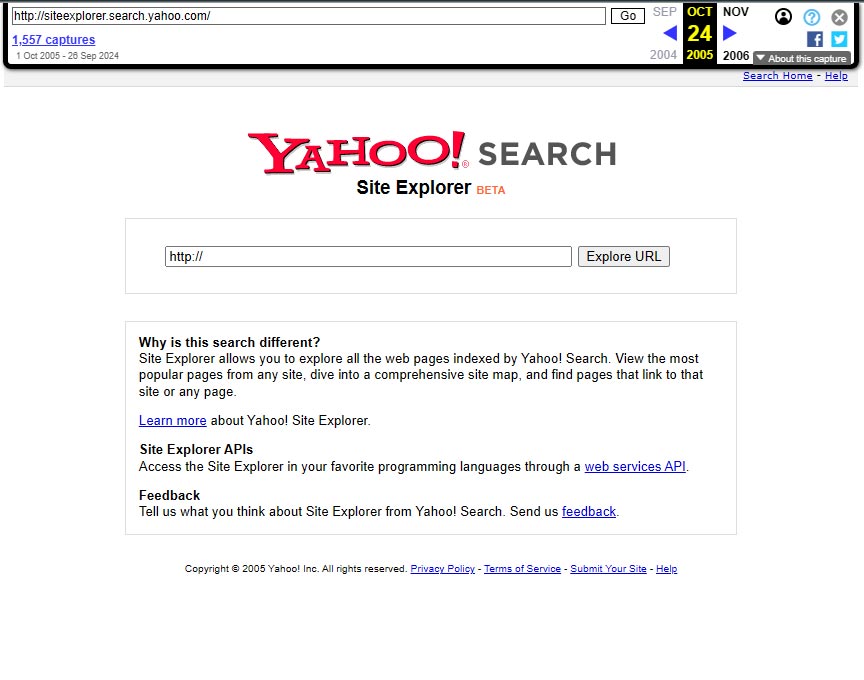
September 29th, 2005: Yahoo Site Explorer launches. Ever wondered why your favourite backlinks platform uses the term “Site Explorer” to describe looking at backlinks? Yahoo Site Explorer popularised the term. YSE was a free to use tool which dominated the SEO landscape for a number of years before closing just over six years later on November 21st, 2011.
2006: Moz ( then SEOMoz ) reported to launch Domain Authority as “Domain MozRank”. An article by Rand Fishkin on moz.com suggests that a DA-like metric was discussed in 2005 following a PageRank toolbar disruption.
2006: Majestic launches full text search engine. Despite growing the search engine to an impressive One billion documents, the Search Engine fails to gain widespread appeal. Research from the search engine is fed back into the ongoing development of the MajesticSEO platform. Lessons learned include the importance of link signals in effective ranking.
July 2006: Jack Dorsey and others launch social media network Twitter. We will come to Elon & X.com later, but for now let’s note that @Jack announced the commissioning of work that would become BlueSky on December 11th 2019.
December 2006: Danny Sullivan launches Search Engine Land. Search Engine Land would later be acquired by Semrush. In October 2024 Semrush bought Third Door Media, the parent company of Search Engine Land and SMX.
September 2007 : John Mueller joins Google. As “Search Advocate”, John would go on to become one of the most listened-to people in Search.
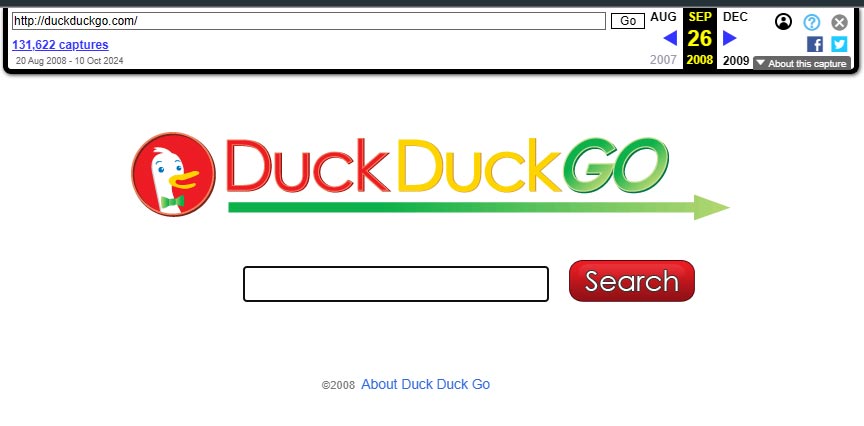
September 2008: Search Engine “DuckDuckGo” launches. Instead of building their own search from ground up, Duck Duck Go sourced data from other search providers. The service embraced concerns over data privacy in 2010, becoming a popular name in search in the privacy-aware niche.
Autumn 2008: Following four years of research and development, Majestic goes commercial with Majestic SEO, offering access to an extensive database of backlinks data. This period sees Majestic moving from back bedroom to commercial premises, and the expansion of the team. Specialists in Marketing, Systems Management, Software Development are hired within months of launch.
October 6th, 2008: Moz announces launch of Index of World Wide Web with 30 billion pages.
June 3rd, 2009: Microsoft Launches Bing. Arguably the first credible full-stack attempt at competing with Google for English language search since 2000. Microsoft revised its search offering to offer a compelling alternative to Google.
Search takes on Spam. Changes to SEO and backlinks industry.
2010: Hamlet Batista moves to New York City from Dominican Republic. A former affiliate marketer, Hamlet Batista was an entrepreneur, and SEO with an engineer mindset. Hamlet ran agencies and software companies, most notably RankSense. He became a leading advocate and authority on using technology to automate and scale SEO. Hamlet Batista passed in January 2021. Search engine algorithm expert Lily Ray wrote a touching tribute to Hamlet Batista’s life and contribution to industry in Search Engine Journal.
February 19th 2010: Kelvin Newman organises a gathering of SEOs in the room above the quadrant pub in a British seaside town. The event was called “brightonSEO”. Fair to say it caught on and rapidly grew. brightonSEO is now one of the most significant conferences on the SEO calendar, with a presence in the US courtesy of brightonSEO San Diego.
November 23rd 2010. SEO Crawler Screaming Frog launched. Few other platforms have carved out such a succesful niche as Screaming Frog in desktop crawling. In 2024 Aleyda Solis reported that Screaming Frog was the most mentioned tool in a survey of Top 3 tools from SEO Specialists.
2011: Dmytro Gerasymenko launches a new backlinks checker. Ahrefs was successful in breaking into a backlinks market dominated by Rand Fishkin’s Moz, and Majestic. Ahrefs succeeded where many have failed – successfully entering an established market. They built on early success to go on to develop a market-leading digital marketing SaaS platform.
February 3rd 2011: Google releases Panda – changes to its’ search ranking algorithm designed to penalise what it saw as low quality or shallow content.
June 29th 2011: Google launches “Google+”. A new social platform, Google+ aimed to fix “broken” online sharing. On April 2nd 2019, the BBC reported that “Google shuts failed social network Google+”. Business users on the G Suite platform were migrated from Google+ features at a later date. Some features did survive – most notable Google Hangouts. Google+ is just one of a few less than successful attempts by the search giant to break into the social market.
November 3rd 2011: The First ever UK Search Awards is held. Nicky Wake‘s company, Rough Agenda start an industry award show. Majestic Site Explorer won, “Best SEO Software”. The Search Awards went global, entering Europe in 2012 and the US in 2013. The Search Awards are now an established part of the SEO calendar.
April 9th, 2012: Facebook acquires Instagram for $1billion.
April 24th, 2012: Google announces Penguin update to combat webspam. The following years saw several updates to Penguin before it was merged into core in 2016.
May 14th, 2012: Majestic launches Trust Flow and Citation Flow. Until this point Majestic offered “AC Rank” (standing for A Citation rank), a 0 – 15 score of page popularity that had never achieved the popularity or respect of Moz’s Domain Authority. Trust Flow and Citation Flow marked a significant evolution of the Majestic offering, integrating quality analysis into its Link Indexes.
May 29th, 2013: SEOMoz rebrands as Moz.
October 2012: Head of Google webspam team, Matt Cutts announces Google disavow tool at PubCon. The Disavow tool gave site owners a facility to report toxic links and help mitigate or avoid penalties. Later, Matt would announce he was going on leave in 2014, before stepping away from the role and departing Google at the end of 2016 for a job at the U.S. Digital Service. Despite controversy, despite criticism, the Disavow tool lives on in 2024, though in May of this year, Googler John Mueller shared that “At some point, I’m sure we’ll remove it“.
2014: Majestic wins Deloitte “Fast 50 UK” High growth Technology business award. Majestic would go on to win Queens awards in Innovation (2016) and Export (2017), and Princess Royal Training awards in 2018 and 2021.
January 15th 2014: Rand Fishkin steps down as CEO of Moz. Rand would leave Moz in 2018 to start the market and audience research firm “Spark Toro”. Despite being “officially” out of SEO for a number of years, Rand remains a hugely influential figure in search.
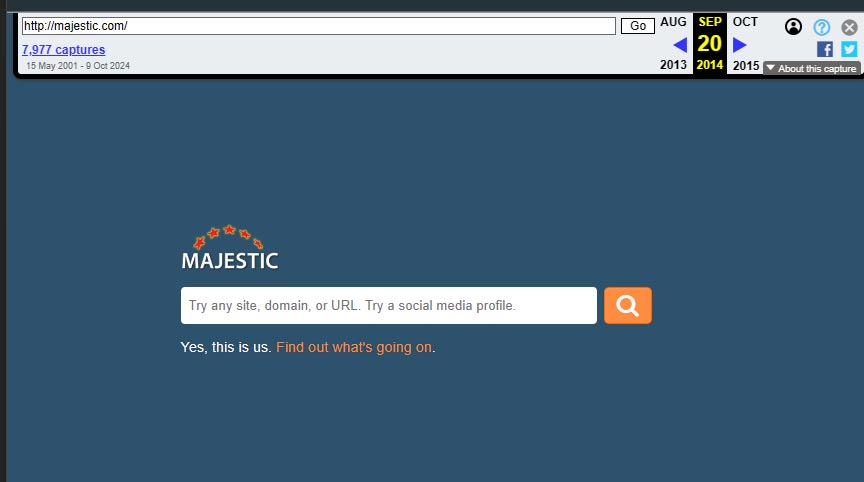
October 3rd 2014: MajesticSEO becomes Majestic. Recognising that there is more to Majestic than SEO, Majestic-12 Ltd acquired the “majestic.com” domain name. Ironically, the MajesticSEO tool was instrumental in conducting an effective domain migration. Majestic SEO lives on to this day in the minds of our customers, and more formally as the title of our podcasts.
Summer 2015: Tim Soulo joins Ahrefs. Starting solo, Tim built an Ahrefs marketing team, contributing to Ahrefs growth and market penetration. Would Ahrefs be where it is today without Tim?
August 27th, 2015: Rand Fishkin announces Russ Jones’ appointment as Principle Search Scientist at Moz. This would not have come as a surprise to followers of Russ’s personal blog, The Google Cache. Where the announcement was made three days earlier. By the time of his appointment, Russ had established himself as an authoritative and respected figure in the industry. His role at Moz cemented that. Russ Jones sadly passed away on June 24th, 2021. He was remembered for his insight, authority, kindness and generosity.
June 13th, 2016: Microsoft acquire LinkedIn “for $196 per share in an all-cash transaction valued at $26.2 billion, inclusive of LinkedIn’s net cash”.
February 19th, 2016: Google moves adverts from right hand side of screen to top of search on desktop. One of a number of changes to adwords/Google Ads over the years, this change had a significant impact on SEO as it moved organic results down the results page, demoted under paid placement.
January 25th, 2017: Majestic prints a 3d link profile of the web in space. The project built on an earlier collaboration with Digital Artist Brendan Dawes and was co-ordinated by Digital PR Strategist Mel Carson.
March 17th 2018: The Guardian and New York times report on “the Cambridge Analytica Files”. The disclosure of millions of users’ data via an API. While Facebook denied a breach at the time, it was later reported that they would pay a $5 billion fine to the Federal Trade Commission in relation to the incident.
October 2017: Danny Sullivan takes on role of “Public Search Liaison” at Google.
November 2018: After many years as the public face of Majestic, Dixon Jones steps down as Marketing Director, becoming Majestic Global Brand Ambassador. To keep himself busy, Dixon went on to become CEO of inLinks and author of Entity SEO: Moving from Strings to Things. Dixon remains a friend of Majestic, a well-loved and respected member of the SEO community, and active on the SEO speaking circuit.
The rise of AI. SEO and backlinks continues to develop.
May 2019: Areej AbuAli launches Women In Tech SEO. Women in Tech SEO has grown to become one of the most influential groups in SEO. The group achieved B-corp status in October 2024. Majestic is a sponsor of WTS, and we were honoured to be headline sponsor for the 2023 London conference.
June 10th, 2019: Semrush launches backlinks database, in doing recognising the importance of backlinks in online visibility SaaS platforms.
September 4th, 2019: Majestic releases “Link Context”. The tool, and analysis that powers it goes far beyond dry reports of backlinks and anchor text to present the context of backlinks within source pages. The launch event on the i360 during the Brighton Fringe was well-received.
January 5th, 2020: World Health Organisation ( WHO ) releases “Pneumonia of unknown cause – China” report. This described an outbreak of illness in Wuhan city, China. By April the same year, half of the world’s population was reported as being in some manner of lockdown.
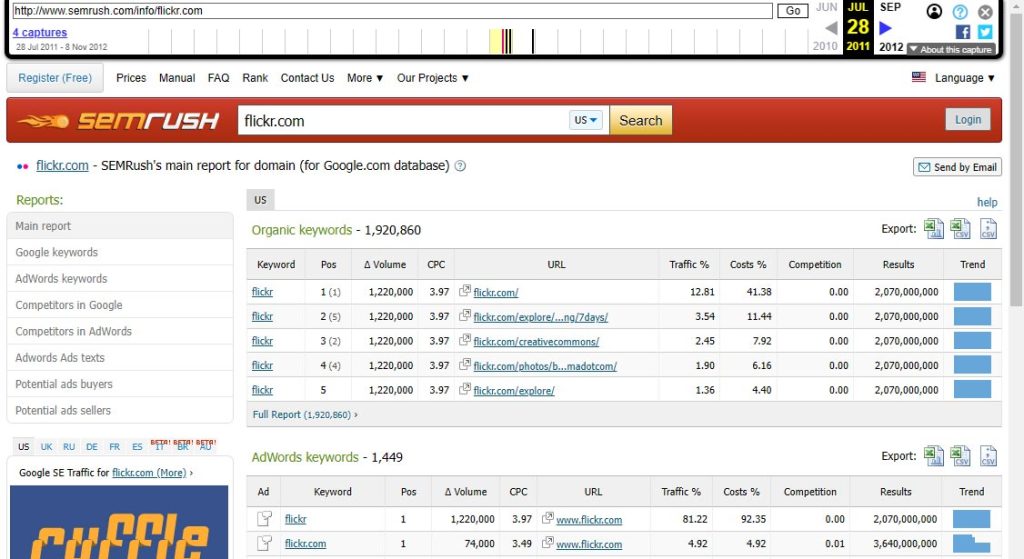
November 18th, 2021: Founded in 2008, Semrush announces IPO, at a public offering price of $20.50 per share. At time of writing, the market cap is reported to be around $2 billion.
December 2021: Majestic launch “SEO in 2022”. David Bain interviewed 66 leading SEO’s in the first edition of this book. Since then, we’ve collaborated on SEO in 2023, SEO in 2024 and the soon to be released, and imaginatively titled SEO in 2025.
August 25th 2022: Google roll out the “Helpful Content Update“. Ahead of it’s release, Barry Schwartz predicts “I do believe this update, when we look back at it years later, will be at the same stature of a Panda or Penguin in the way that it forced SEOs to rethink some of their SEO strategies”. By 2024, HCU was merged into Core. The impact seems to have been significant so far, reaching beyond PBNs generated using LLMs. If commentary is anything to go by, Barry’s prediction seems to hold water. This update has recieved significant coverage. From guides on how to manage UGC (user generated content) for HCU, reports of the impact of HCU on travel, blogging and review sites, or suggestions for HCU mitigation techniques.
November 30th, 2022: Open AI releases an early demo of Chat GPT. Chat GPT placed large language model into the digital marketers’ vocabulary. Immediately capturing interest and imagination, Chat GPT created a huge surge of activity around automating content creation, outreach, support and software development.
July 2023: Following purchase in 2022, Elon Musk rebrands Twitter to x.com.
November 1st, 2023: Inflatable alligators at SEO conferences temporarily becomes a thing following an article by Amanda Chicago Lewis in the Verge.
March 2024: Google rolls out two significant algorithm updates targeting spam and potentially AI generated “Search Engine First” content.
May 27th 2024: With support from Mike King of iPullRank , Rand Fishkin plays pivotal role in announcing discovery of google search API documents. The leak is credited to Erfan Azami.
October 25th 2024: While no doubt other things are happening in the wider world, in SEO and Search, Majestic turns 20!
Have we missed anything?
We hope you’ve enjoyed this overview of the last two decades. We’ve tried to highlight some significant events, but make no claim to be fully comprehensive. That said, if you can see a significant event that we’ve missed we would welcome your thoughts! Please drop us a line in the comments below, or through our lovely support team and let us know.
Any thoughts, comments or reflections on the evolution of search, online visibility, SEO and backlinks welcomed.
- How to Set an SEO Strategy for 2026 - December 17, 2025
- Site Explorer: Advanced Query Filters BETA part 3 - November 27, 2025
- A Sneak Preview of SEO in 2026 - November 27, 2025







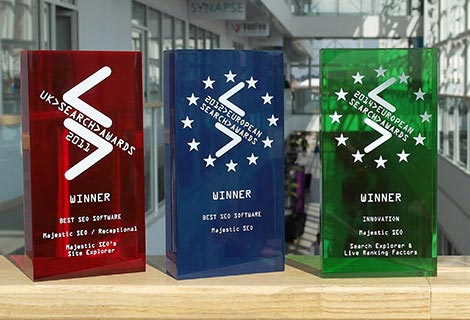
Hello. Good cheer to all on this beautiful day Good luck :
October 28, 2024 at 12:12 pmGood cheer to all on this beautiful day Good luck
October 29, 2024 at 7:19 pmWonderful content. Many thanks.
October 30, 2024 at 1:09 amCongrats!
October 30, 2024 at 1:48 amI've been using your tool and that really help me understand how SEO works.
Keep up the good work 🙂
In a world where SEO strategies are constantly evolving how much trust should we place in metrics like Trust Flow? Can relying too heavily on these indicators lead us astray in our link-building efforts or do they provide a necessary compass in the chaotic landscape of digital marketing?
November 4, 2024 at 2:00 pmThis sort of question comes up a lot. Barry Schwartz shared an interesting thread on vendor metrics:
https://x.com/rustybrick/status/1849156586012598730
I responded with the following:
My 2c for what it’s worth: Backlink vendor metrics are a practitioners aid to assist in rapid diagnosis of online visibility. Used properly they dodge some of the issues inherent in comparing backlink counts or referring domain counts which are often far more problematic.
A shorter view: Trust Flow is a tool in the right hands.
November 4, 2024 at 2:51 pmWhat if your competitors link profile is stronger than yours? How can you strategically use that knowledge to not only improve your own profile but also to disrupt their ranking without engaging in unethical practices? Lets explore innovative tactics for reclaiming your SEO supremacy.
November 4, 2024 at 2:14 pmIt's easy to get fixated on links as a means of ranking.
A different way to consider links are as a sign of online visibility. That makes them valuable as conduits of qualified organic traffic. Something to value and report on. This perspective subtly changes the focus from link aquisition to brand development.
November 4, 2024 at 3:14 pm